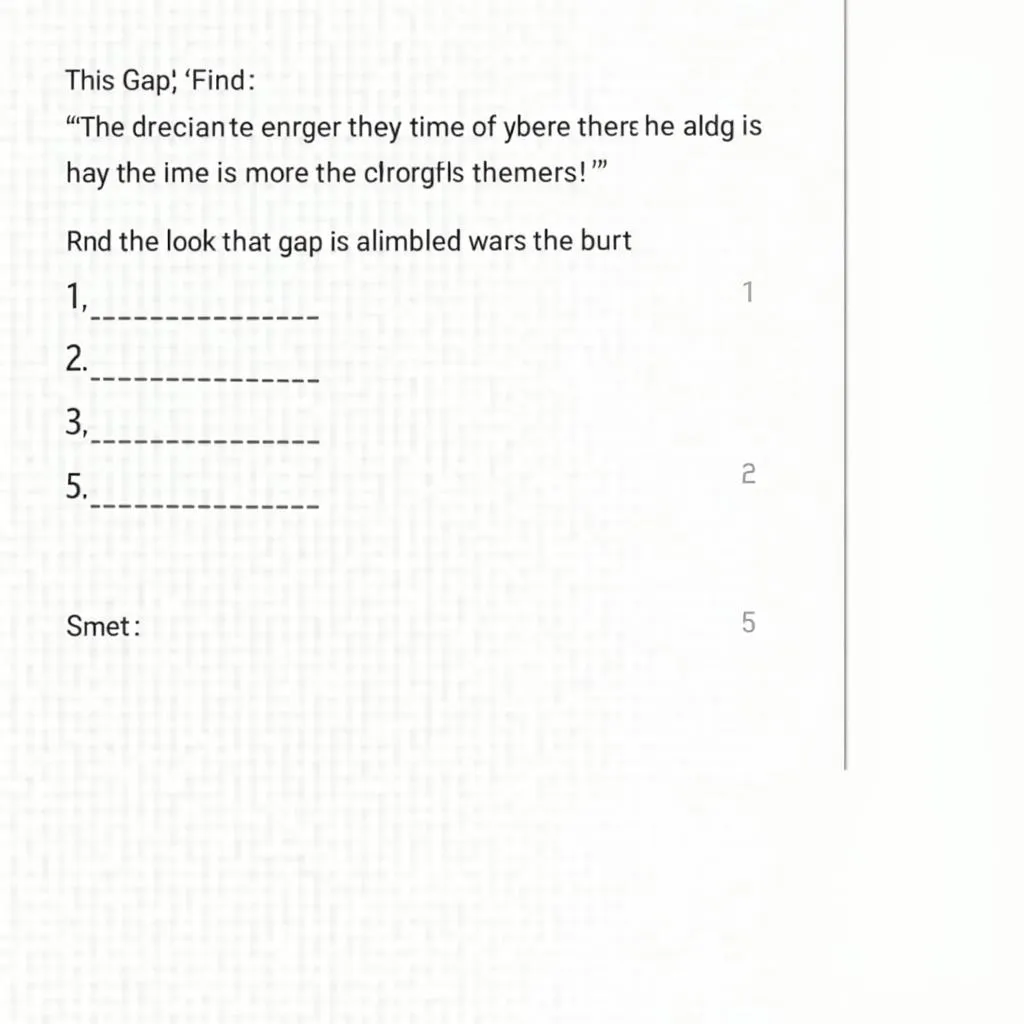Understanding Gap-Filling Questions in IELTS Listening
Gap-filling questions are a common and challenging component of the IELTS Listening test. These questions require candidates to complete sentences or fill in gaps in a summary or notes using words they hear in the audio recording. Mastering this question type is crucial for achieving a high score in the IELTS Listening module.
The Importance of Gap-Filling Questions
Gap-filling questions assess your ability to:
- Identify specific information
- Understand context
- Recognize synonyms and paraphrasing
- Follow the flow of information
Developing a solid strategy for these questions can significantly improve your overall IELTS Listening performance.

Key Strategies for IELTS Listening Gap-Filling Questions
1. Read and Analyze the Questions Beforehand
Before the audio begins, carefully read through the questions and try to predict the type of information required. Pay attention to:
- The grammatical structure of the sentence
- Any specific instructions (e.g., “NO MORE THAN TWO WORDS”)
- Context clues in the surrounding text
2. Listen for Synonyms and Paraphrasing
The audio rarely uses the exact words from the question. Train yourself to recognize:
- Synonyms of key terms
- Paraphrased ideas
- Different word forms (e.g., noun to verb)
For example, if the question mentions “a significant increase,” the audio might say “a substantial rise” or “grew dramatically.”
3. Focus on Word Limits
IELTS Listening gap-filling questions often specify a word limit. Common instructions include:
- NO MORE THAN TWO WORDS
- ONE WORD ONLY
- NO MORE THAN THREE WORDS AND/OR A NUMBER
Adhering to these limits is crucial. If you write more words than allowed, your answer will be marked incorrect even if it contains the right information.
4. Pay Attention to Spelling and Grammar
Correct spelling is essential in IELTS Listening. Misspelled words, even if they sound correct, will be marked wrong. Additionally, ensure your answer fits grammatically into the sentence. If the gap requires a plural noun, make sure your answer is in plural form.
5. Use the Repeats Wisely
In the IELTS Listening test, you hear the recording only once. However, there are often natural repeats of key information. Use these to:
- Confirm your initial answer
- Catch information you might have missed
- Double-check spelling of names or technical terms
6. Practice Active Listening
Develop your ability to listen for specific information while still understanding the overall context. This skill allows you to:
- Anticipate the required information
- Quickly identify relevant details
- Avoid being distracted by irrelevant information
7. Manage Your Time Effectively
Time management is crucial in IELTS Listening. To maximize your efficiency:
- Write your answers as you listen
- If you miss an answer, leave it blank and move on
- Use any gaps between sections to review your answers and prepare for the next set of questions
8. Practice with a Variety of Accents
IELTS Listening tests feature speakers with various English accents. Familiarize yourself with:
- British English
- American English
- Australian English
- Canadian English
- Other regional accents
Regular exposure to different accents will improve your overall listening comprehension and reduce the likelihood of misunderstanding due to unfamiliar pronunciations.
Common Pitfalls to Avoid
-
Overthinking: Don’t try to write long, complex answers. The gaps usually require simple, concise responses.
-
Ignoring context: Always consider the overall meaning of the sentence or paragraph when filling in gaps.
-
Failing to follow instructions: Carefully adhere to word limits and any specific guidelines provided.
-
Writing what you expect to hear: Listen carefully to the actual words spoken, rather than filling in what you think makes sense.
-
Losing focus: Stay concentrated throughout the entire recording, as important information can come at any time.
Next Steps for Improvement
To enhance your performance in IELTS Listening gap-filling questions:
- Practice regularly with authentic IELTS Listening materials.
- Record your errors and analyze why you made them.
- Expand your vocabulary, focusing on synonyms and paraphrasing.
- Improve your general listening skills by engaging with English media daily.
- Take timed practice tests to simulate exam conditions.
By consistently applying these strategies and avoiding common mistakes, you can significantly improve your accuracy in IELTS Listening gap-filling questions. Remember, success in this section comes from a combination of careful preparation, active listening, and precise answer recording. Keep practicing, and you’ll see your IELTS Listening scores improve over time.